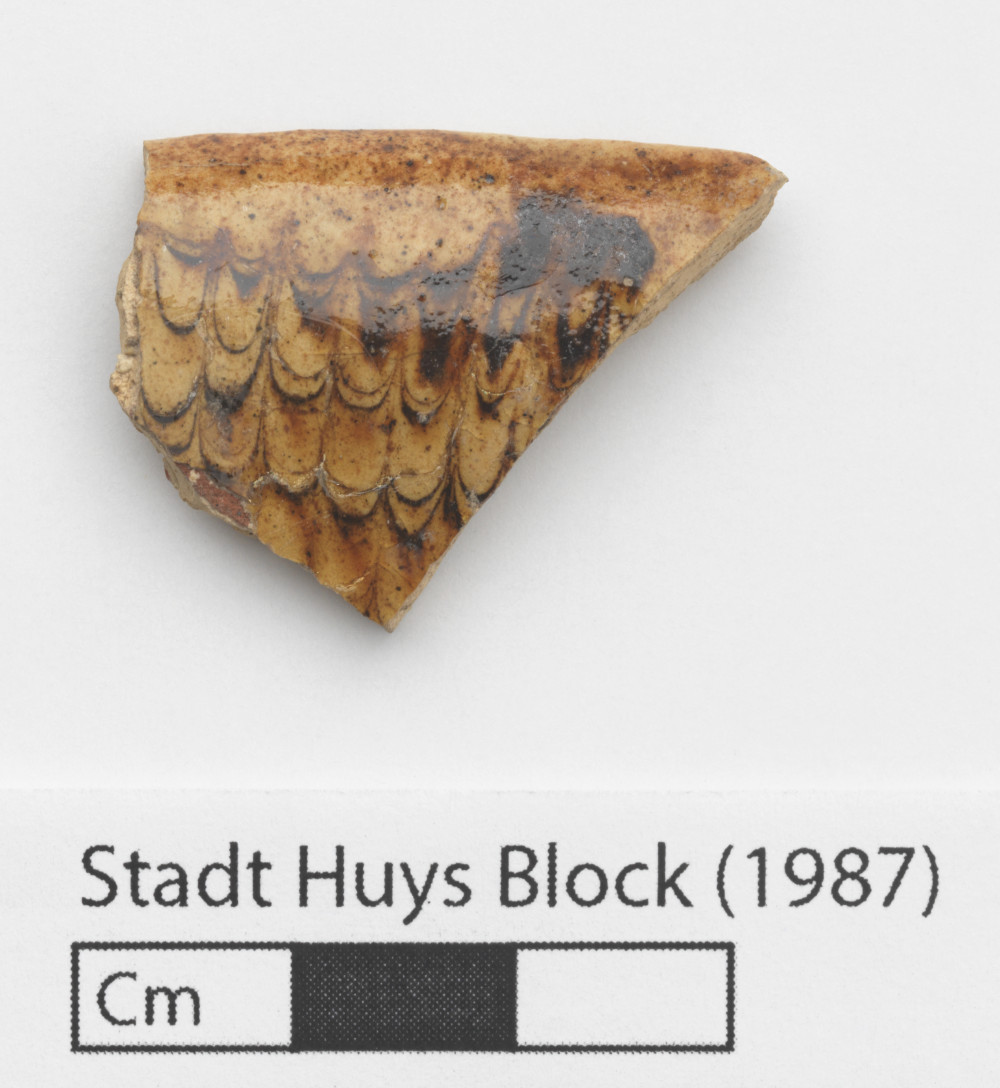Introduction: Lots 8, 9, and 15 are modern designations for adjacent parcels of land that were owned together and used as a single property until the early 1830's. Excavations produced important discoveries like that of the Colonial-era Lovelace Tavern, proving that significant archaeological resources could still exist in urban spaces. Project archaeologists were able to lobby for increased time and funds to continue their work on the strength of these finds, leading to additional discoveries. In all, the project provided considerable information about the history of New York City and its inhabitants from the 17th to the 20th centuries.
Rationale: Test Cut T was an exploratory trench placed in the backyard of Lot 9 to assess the integrity of the stratigraphy underlaying a modern cement floor. Importantly, the excavations of the test cuts in the backyard of Lot 9 revealed that this area was the most archaeologically intact on the entire project. This means that many archaeological features, artifacts, and intact stratigraphical layers were discovered during testing. Therefore, Test Cut T is an important resource for understanding the historical development of Lot 9.
Results: In 1829, the Lawrence family divided their property into three lots (8, 9, 15) and built a new commercial building on what is now Lot 9. Archaeologists uncovered a 3-foot deep builder's trench used during the construction of the new building. Two major layers were found in the trench: an upper portion dating to the 19th century (ca. 1829) and a lower portion dating to the 18th century. This level is from the lower, older section of the trench and was found surrounding the footing stones for an 18th century building. 19th-century workers appear to have uncovered an earlier builder's trench and reused the footing stones for the new building during construction activities. It is not know to what 18th-century building the footing stones belong to. The 19th-century construction also truncated, or altered, the original dimensions of the 18th-century portion of the builder's trench. The artifacts found in the lower section all date to the 18th century.
Lot 9, Test Cut T, Stratum XXXI, Level A
-
Collection method
Trowel, Screen (1/4-inch mesh). Arbitrary 4-inch Level.
-
Soil description
Brown Clayey Silt
-
Munsell
5Y 4/3, 10YR 5/6



